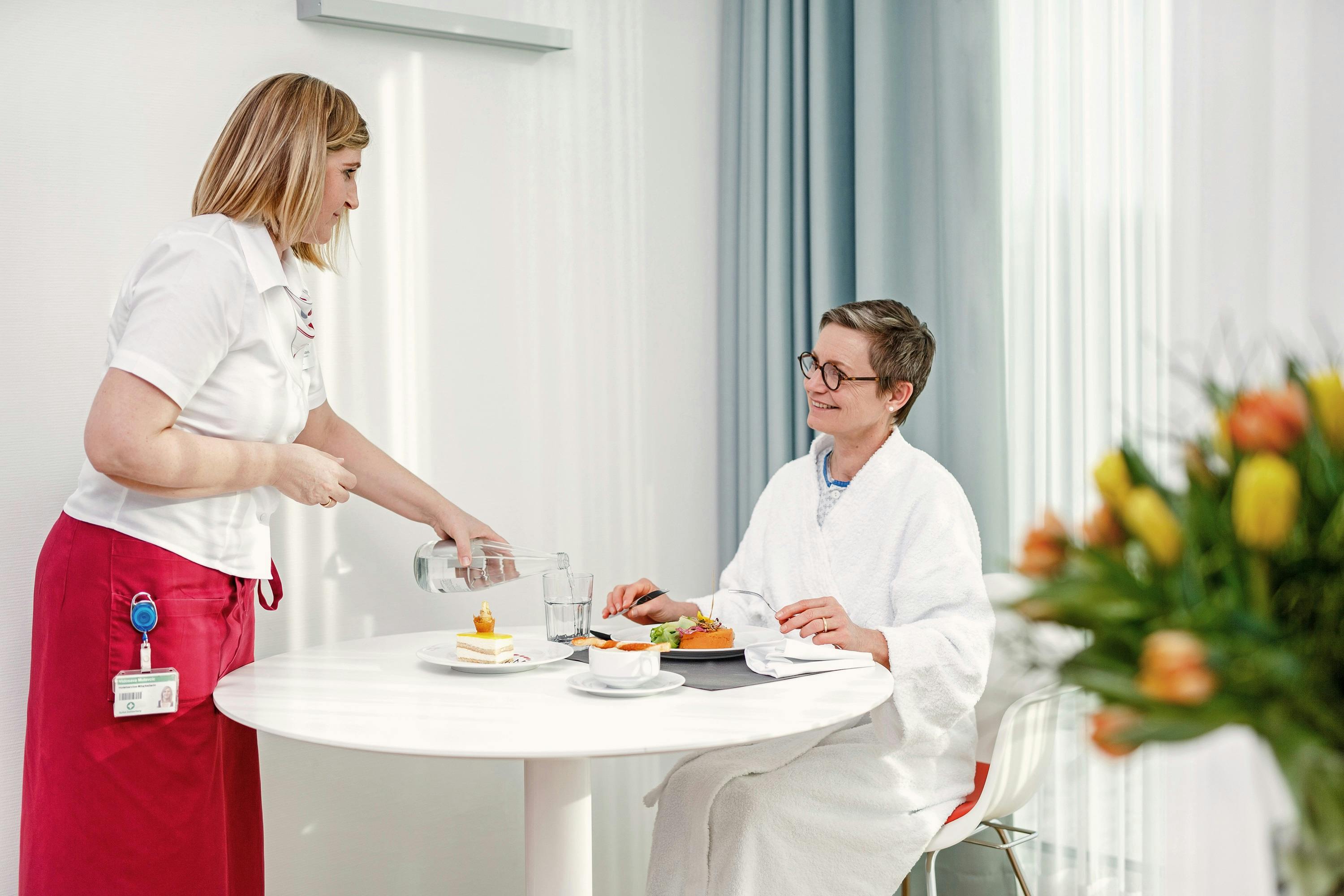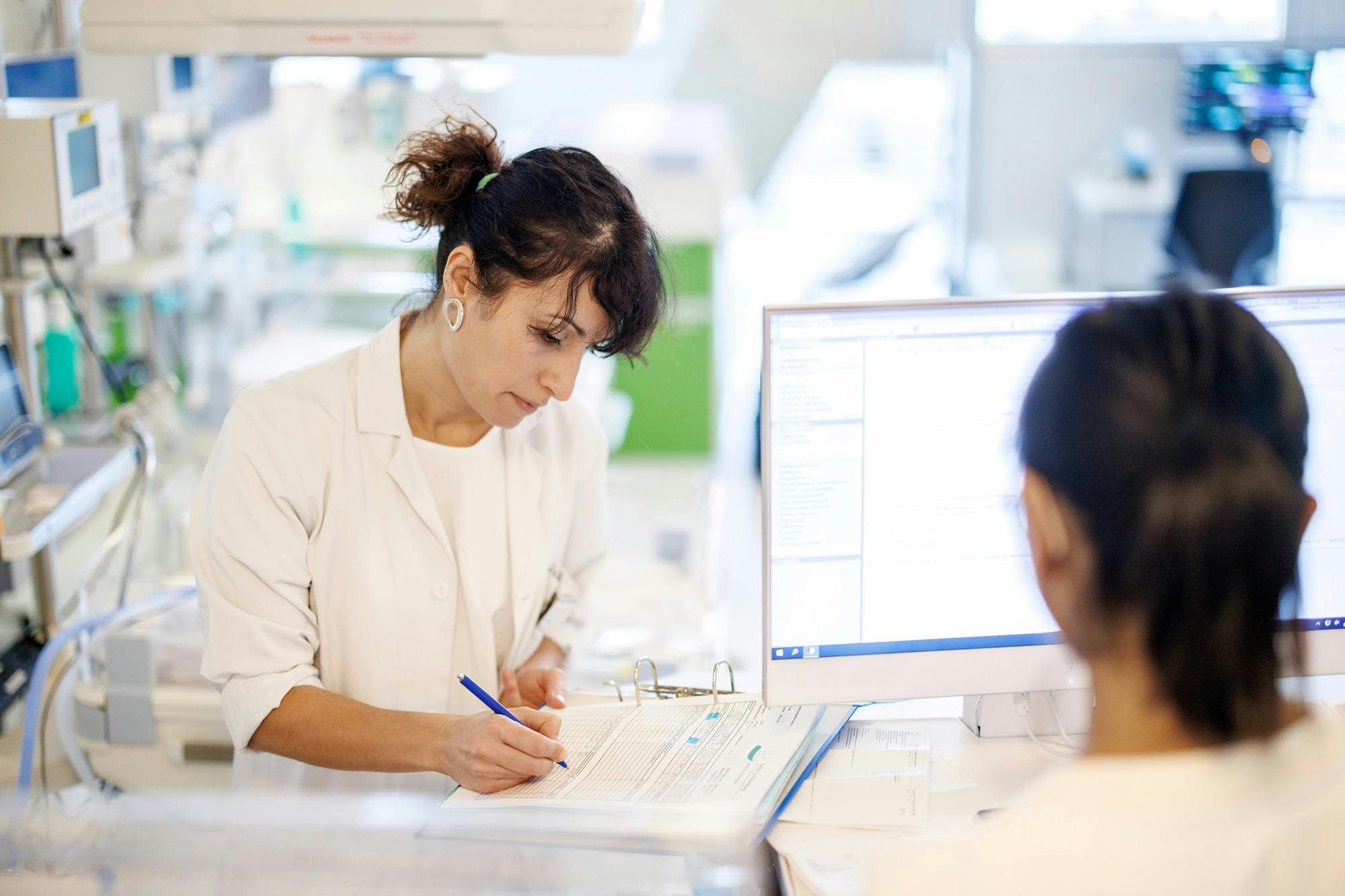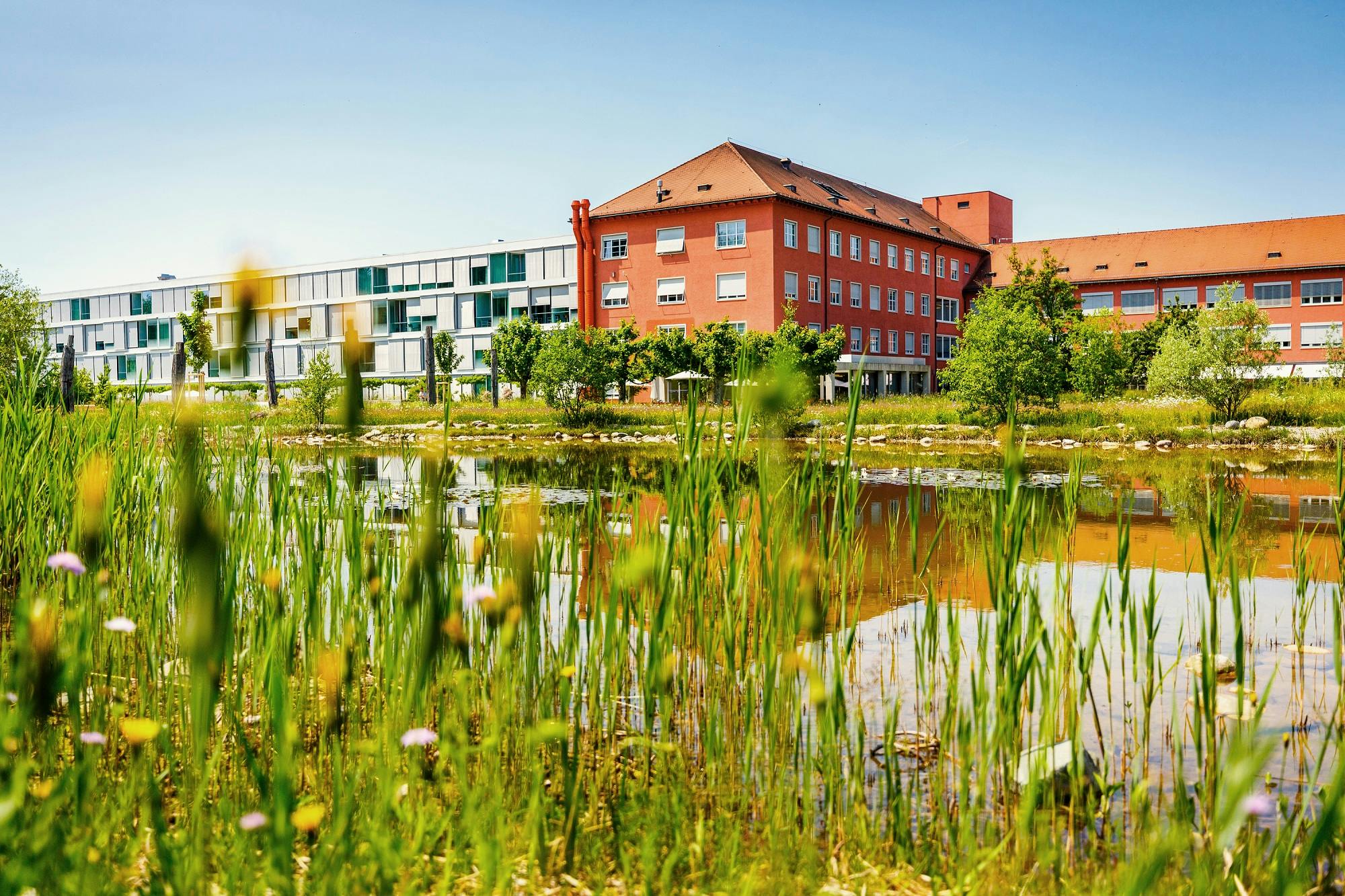BreastCentre Zurich
Every breast cancer is individual. So is every treatment. Your doctor will explain all the options to you in detail. Each individual treatment method affects different aspects of the disease. Most types of breast cancer are removed by surgery. You will receive personalised care throughout your treatment, from the initial examination to aftercare . We will assign you your own so-called Breast Care Nurse, a specialised nursing expert.
We offer these treatments
Surgery
Surgery for breast cancer is one of the mainstays of treatment. It is designed to remove the tumour with the greatest possible safety. Most operations for breast cancer are performed as breast-conserving surgery. This means that only the tumour is removed. The aim of an operation is to remove the tumour completely while at the same time preserving as much healthy breast tissue as possible in order to achieve a visually favourable result. However, some patients still have to have the affected breast removed for oncological reasons. Additional treatments are often added to the operation. We determine these at interdisciplinary tumour board meetings. Naturally, we involve you closely in these consultations. These additional therapies complete the treatment and improve your chances of recovery.
Breast cancer and reconstruction
Fortunately, it is now possible to reconstruct the breast in the same operation in which it is removed. This is done using your own tissue or implants. This means that you will not wake up without the feeling of having no breast. The simultaneous reconstruction of the breast has no negative influence on the course of the cancer or further chemotherapy. On the contrary: it improves your quality of life and therefore your sense of well-being. Reconstruction can also take place at a later date following breast amputation. If we have to carry out radiotherapy, it is better if the breast is reconstructed using the patient's own tissue. With microsurgical procedures in reconstruction, we can achieve better aesthetic results and significantly reduce possible adverse effects in the area where the autologous tissue was removed. We will discuss the best surgical procedure with you on an individual basis. You can find out more about breast reconstruction at Plastic Surgery.
Radiotherapy
In radiotherapy, we irradiate tumours or any microscopic tumour remnants still present after an operation. This prevents or slows down the growth of a tumour. Radiotherapy is usually used after an operation to eliminate any tumour remnants. Its aim is to reduce the risk of the disease recurring (locoregional recurrence) in the breast and armpit. Radiotherapy can also be used if breast cancer recurs in the breast or another area.
Drug therapy: Chemotherapy
The best-known drug therapy is chemotherapy. It is directed against the growth of cancer cells - often only after an operation (adjuvant therapy). You will be given so-called cystotics, usually by infusion, to prevent a relapse. In certain cases, however, chemotherapy is sometimes also used before an operation (neo-adjuvant therapy). The aim of this is to shrink the cancer. There are breaks between the individual cycles of chemotherapy during which you can recover. You can find out more about chemotherapy here.
Drug therapy: anti-hormonal therapies
Drug therapies also include anti-hormonal therapies. They suppress the effect and/or the production of sex hormones - and thus inhibit the growth of tumours. Around two thirds of breast cancers are hormone-receptor positive, which means that they grow under the influence of sex hormones. Anti-hormone therapy, also known as "anti-hormonal" or "endocrine" therapy, aims to prevent the tumour from growing or recurring after an operation by preventing hormone production or the effect of hormones in the body. You can find out more about anti-hormonal therapy here.
Drug therapy: immunotherapies
Immunotherapies are also among the drug therapies. These drugs stimulate the body's defence system so that it can take targeted action against cancer cells. There are also drugs that act on cancer cells at a precisely defined point of attack and are therefore known as targeted therapies.
Breast-conserving therapy (BET)
Whenever possible, we favour breast-conserving therapy (BET), also known as segmentectomy, in the treatment of breast cancer. In BET, we only remove the part of the breast affected by the tumour. After removal, we reshape the breast. For this operation, the tumour should not be too large and the breast should not be too small so that the result looks good cosmetically. As a rule, we make the affected breast slightly smaller than the healthy breast, but the differences are usually small. The important thing with BET is that we remove the tumour "R0". This means that no tumour remains in the breast and the margins are healthy. The latter are assessed under the microscope by the pathologist (histology). In most cases, the breast should be irradiated after BET surgery. This reduces the likelihood of recurrence in the breast. You can find out more about BET here.
Finding the right path together
There are many different types of breast cancer. It is therefore important that we create the right treatment concept for you individually and in close consultation with you.
Contact / Registration
Monday to Friday:
8.00 - 16.00Standort Spital Zollikerberg
Fachärztezentrum Prisma
Trichtenhauserstrasse 12
8125 Zollikerberg


